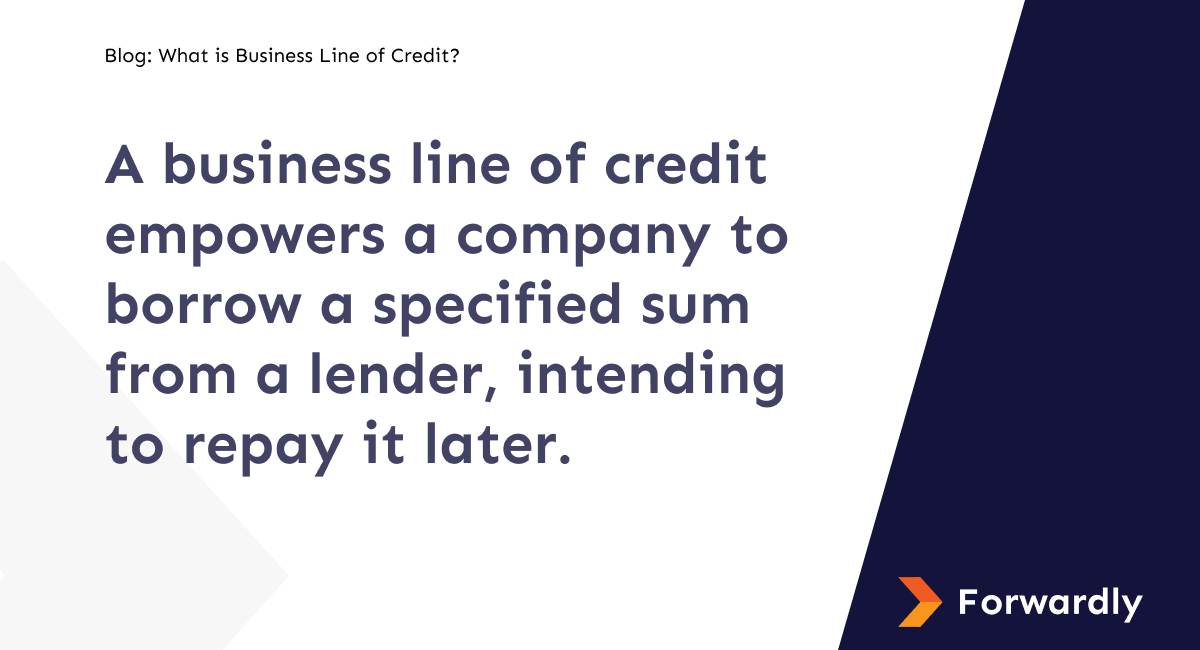For your small business to survive, cash flow is one of the most important financial factors. You must have sufficient working capital for various reasons, such as purchasing equipment, investing in new infrastructure, and dealing with day-to-day expenses. Moreover, a hefty chunk of late payments from customers and spending money on unexpected expenses can put a strain on your cash flow.
And, without adequate cash flow, your small business can lack the capacity to pay suppliers. Besides that, negative cash flow could seriously affect your business’ credit rating, erode the competitive advantage, and eventually make your business insolvent. These are the situations where a small business line of credit comes into play. It is one of the most popular funding options among business owners to access money to address various cash-flow issues and other short-term situations where you need quick access to extra capital. What is a business line of credit? Understanding that and what the benefits can be for your small business can be key to navigating financial challenges.
What is a business line of credit?
A business line of credit empowers a company to borrow a specified sum from a lender, intending to repay it later. While you have to make fixed and minimum monthly payments in term loans and credit cards respectively, you can pay back your credit line anytime, without any early repayment fees. Business lines of credit are an example of “revolving credit”.

Unlike a traditional business loan, you have the flexibility to borrow a predetermined amount of funds (usually ranging from $1,000 to $250,000). You will be repaying only the amounts you withdraw and only paying interest on the amount of credit you’ve used to make the funds available again.
This sought-after funding can be used to finance capital expansion, purchase inventory, or deal with negative cash flow situations. These loans are typically unsecured, which means you don’t need to put any collateral such as real estate or inventory. However, some business lines of credit may require collateral, due to the larger amount of cash being lent.
Qualification requirements
Both traditional banks and alternative lenders provide a line of credit for businesses that have strong revenue and an established business credit profile. Lenders typically are willing to offer short lines of credit to new, and even less established businesses. While mid-term lines of credit are more for businesses with good financial history and solid company creditworthiness. The maximum amount of funding available, interest rates, and repayment terms depend on your business revenue, credit rating, business history, and various other factors.
The qualification criteria for these types of small business financing vary from lender to lender. However, there are some common requirements that one can expect when applying for a business line of credit. If your business fulfills the following minimum requirements, then you should seriously consider applying for a line of credit:
- Business history: Must be in operation for at least two years.
- Annual revenue and profit: The company must have revenues and must be profitable. You may have to provide proof of revenue and business health when qualifying for a line of credit.
- Collateral: In a larger amount of cash cases, businesses may have to put traditional collateral, like accounts relievable, inventory, machinery, real estate, and financial instruments.
- Guarantee: If you’re an independent small business owner, most business lines of credit require a personal guarantee. If the company is a subsidiary of a larger company, lenders usually require a guarantee from the parent company as well.
- Personal Credit: Lenders may examine the personal credit of the business owner and all guarantors.
How to apply for a business line of credit
Depending on the lender you’re working with, your business line of credit application process can be easy or tough. Thanks to various alternative lenders who use the latest technology to provide a quick and streamlined application. On the contrary, traditional banks will have a more intensive business line of credit application.
If you’re applying for the first time, then the whole application process for this small funding can be intimidating.
The important steps that you need to follow
- Review your credit score and finances.
- Compare different alternative lending options and choose one that best fits your business’s financial requirements.
- Since traditional banks tend to be harder to qualify, go for alternative lenders.
- Get to know about the interest rates and fees before finalizing a lender.
- Gather and submit your documents and business information.
Documents you need on hand before applying
- Driver’s license
- Voided Business Check
- Bank Statements
- Balance Sheet
- Profit and Loss Statements
- Credit Score
- Business Tax Returns
- Personal Tax Returns
Why consider a business line of credit?
A business line of credit provides flexibility that a regular loan doesn’t. It is a great funding option for small business owners who are struggling with cash flow problems. Once approved for a business line of credit, you can draw funds when needed and use them for various business purposes.
With a business line of credit, a business can get up to $250,000 with rates ranging anywhere from 5% to more than 20%. Besides that, this loan option offers you payment terms that range from 6 months to 5 years.
Advantages for small businesses
- Interest rates are lower than credit card rates.
- Unlike a conventional loan, a business line of credit gives you the ability to repay and borrow again when needed.
- Give business owners the flexibility to use funds for a variety of business purposes.
- Provide immediate cash during tough times – help cover cash flow gaps during slow seasons, protect against emergencies, and use for large purchases.
- It can be transferred online, over the phone, or through a check written against the line of credit.
- Making timely payments on an unsecured line of credit can help the business build a strong credit score.
Situations you can use a business line of credit loan for
- Finance ongoing expenses and cover working capital gaps.
- Hiring new talents to meet the growing demand for your organization.
- Purchasing inventory and a new piece of equipment.
- Expanding business to a new location or purchasing a new office.
- Using for payroll, seasonal expenses, and investments.
How do business lines of credit work?
The fundamental concept is pretty simple – a set credit limit is lent to you by the lender. You can access any amount of money up to that limit and repay it over time with an added interest fee. However, you’re only charged interest on the amount you actually use. You can keep reusing and repaying a specific amount of money as often as you would like, as long as you make timely payments and don’t exceed your limit. A line of credit is revolving credit, in other words. Business lines of credit can come both secured and unsecured. While secured loans are backed by collateral like real estate, inventory, and accounts receivable, etc., you have to give a personal guarantee in an unsecured line of credit.
For you to better understand how it works, we’re sharing the following example:
Imagine, you’re given access to $50K small business line of credit. Now, you spend 30K to buy new equipment for your business, left with 20K funds with you.
Once you repay that 30K with interest, you’ll have the whole 50K again with you – without having to apply for another loan. This way you can save yourself a lot of time and energy.
Difference between business lines of credit & traditional term loans
If you’re seeking funding to run and grow your small business, you may be debating between a line of credit and a term loan. Knowing the differences will help you understand what is best for your company at the moment you need capital. Here is how a business line of credit is different from a business term loan:
- A line of credit can be used multiple times whereas a term loan is used one time only.
- You may have a weekly or monthly payment and regular interest rates with term loans while you make payments on the amount of money you borrowed with a line of credit.
- The closing costs are lower for a line of credit than a term loan.
- Lines of credit are best for short-term while term loans are usually best for long-term purposes.
- Lines of credit have lower rates of interest but are variable while term loans have high but fixed interest rates.
Difference between business lines of credit & credit cards
Although both the small business financing options work almost similar, there are a few important differences you should be aware of:
- Business lines of credit usually have lower interest rates than credit cards.
- Credit cards are almost always unsecured, but lines of credit are both secured and unsecured.
- They don’t always require a monthly payment, but credit cards do.
- Lines of credit usually come with a higher credit limit than credit cards.
- Credit cards charge high fees for cash advances, whereas lines of credit always deal in cash.
How much does a line of credit cost to businesses?
Understanding the cost of a line of credit is pretty simple – when you take, you pay. Moreover, you’ll only pay interest on the cash you draw. Besides that, most lenders will charge an annual fee, in addition to interest charges. Besides, you may have to pay a transaction fee if you’re going to need a significant number of loan advances and repayments. Get a prequalified Line of Credit from SME lenders in a simple and quick process that takes less than 2 minutes. Any business operating in the USA and Canada may qualify. No credit check and no fee are charged to provide funding quotes.
Now that you’ve understood what a business line of credit is, if you’re uncertain about getting a small business loan, take the time to explore all your options. Knowing about different ways to get funds can help you decide what’s best for your business.
 Back to Blog
Back to Blog

